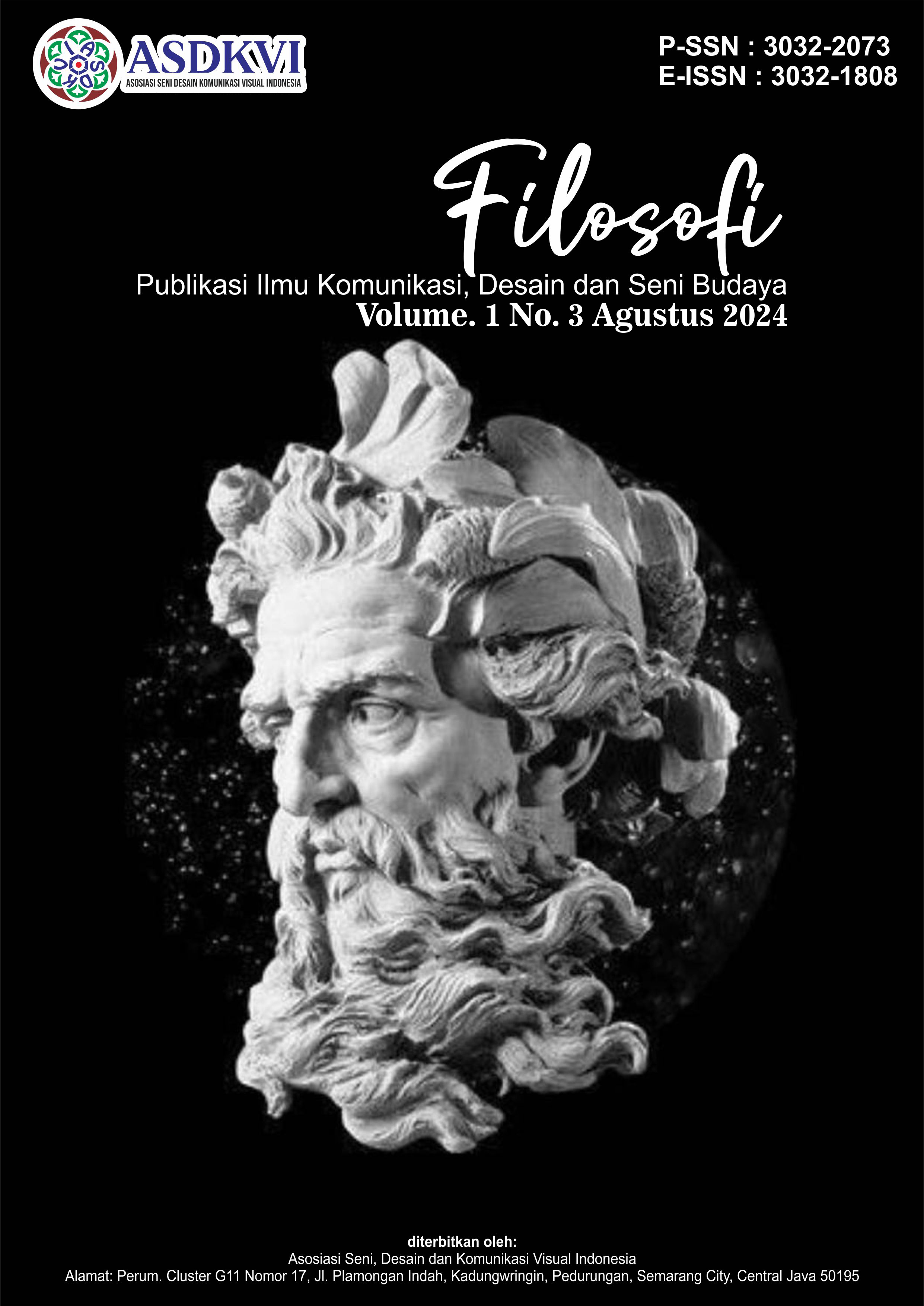Representasi Sosial Budaya dan Kesenjangan Gender Pada Tari Lengger, Tari Bedhaya dan Tari Reog
DOI:
https://doi.org/10.62383/filosofi.v1i3.171Keywords:
Javanese Culture, Gender Concept, Dance, Gender Stereotypes, Javanese WomenAbstract
Dance serves as a significant reflection of human cultural heritage, and its role in shaping and reflecting socio-cultural realities remains debated. In this context, the concept of gender holds significant influence in shaping representations and social disparities within dance. This research aims to delve into the influence of gender concepts in dance, particularly within Javanese culture, focusing on contemporary dance practices. Through qualitative approaches and content analysis, the study reveals strong gender stereotypes and objectification of bodies in dance, as well as the idealization of women's roles in Javanese cultural guidelines. The findings highlight challenges to gender norms in traditional Javanese dance, while also indicating limitations in existing research, such as cultural context constraints and limited data. It is hoped that this research contributes to understanding the role of gender concepts in dance and their implications in society, while also providing a foundation for further research.
References
Adelita, W. K. (2017). Fenomena peralihan gender pada penari jathil dalam kesenian reog di Kabupaten Ponorogo. https://doi.org/10.31227/osf.io/t9bw6
Islami, M. Z. (2022). Relevansi nilai filosofis tari lengger lanang Banyumas dalam konteks ketimpangan gender dan dinamika tari di tengah perubahan masyarakat Indonesia. JST, 11(2). http://journal.unnes.ac.id/sju/index.php/jst
Nggai, Y. (2022). Kajian tentang gender dari perspektif adat Lio di Desa Mauloo Kecamatan Paga. De Cive: Jurnal Penelitian Pendidikan Pancasila dan Kewarganegaraan, 2(11), 403–412. https://journal.actual-insight.com/index.php/decive/article/view/1032
Putri, R. P. (2015). Relevansi gerak tari Bedaya Suryasumirat sebagai ekspresi simbolik wanita Jawa. Catharsis: Journal of Arts Education, 4(1). http://journal.unnes.ac.id/sju/index.php/catharsis
Sulastuti, K. I. (2017). Tari Bêdhaya Êla-Êla: Eksplorasi kecerdasan tubuh wanita dan ekspresi estetika rasa dalam budaya Jawa. KAWISTARA, 1(1). https://doi.org/10.22146/kawistara.22576
Downloads
Published
How to Cite
Issue
Section
License
Copyright (c) 2024 Filosofi : Publikasi Ilmu Komunikasi, Desain, Seni Budaya

This work is licensed under a Creative Commons Attribution-ShareAlike 4.0 International License.





